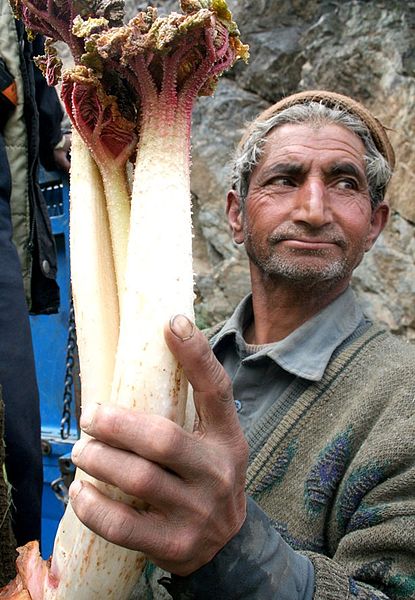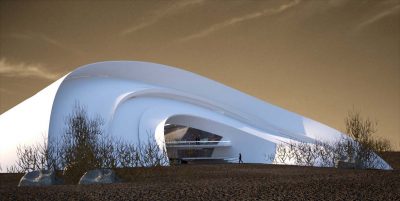While we contemplate whether GMO engineers can free our world from its glaring lack of light emitting houseplants and radiant pigs, we overlook far more amazing secrets of nature which make our best bio-science minds look like rank amateurs. The humble rhubarb plant is one such example.
Harvard scientists recently discovered a secret lurking beneath the oversize leaves of this bittersweet plant. This secret may lead to more widespread and efficient use of solar energy.
Bionic Rhubarb
The Six-Million Dollar man, the Bionic Woman and Robocop redefined the word bionic to mean a biological/robotics crossbreed. But long before the advent of bad 1970s television shows and Arnold Schwarzenegger movies, the word bionic referred to a technique of learning from nature.
Bionics meant the study of nature and the application of what we learn to meet our needs. So, for example, people studied the nanoscale engineering which gives lotus leaves their self-cleaning properties. From this they developed replicas of this design. Velcro is another example. Swiss engineer George de Mestral noticed how tenaciously the seeds of wild burdock stuck to his clothes and his dog’s fur. He studied the burrs and applied their shape to his invention. So what can we learn from rhubarb?
Amazing Rhubarb
Rhubarb is an amazing plant. Some varieties such as the desert rhubarb (Rheum palaestinum) are able to irrigate themselves.
Their enormous 1/3 square meter leaves collecting more than four liters of water each year, sixteen times what similar-sized plants can collect in their Negev desert environment where as little as 75mm of rain falls each year. These amazing plants literally water themselves!!!
Other rhubarb varieties such as Rheum rhabarbarum, are able to survive long cold dark winters in northern climates. They begin producing sugar in early spring thanks to the photosynthesis generated in its enormous dark-green leaves. The thick pinkish-red stems of this large-leafed plant are used in European and American cakes and pies.
You won’t find corned-beef and cabbage served in authentic Irish homes during Saint Patrick’s day holiday but the powerful smell of rhubarb and mackerel is likely to waft from many Irish kitchens before, during and after this upcoming holiday.
Rhubarb’s Energy Secret
But now scientists at the Harvard School of Engineering and Applied Sciences (SEAS) have extended the use of rhubarb beyond cakes and pies and smelly fish meals. They discovered ways in which rhubarb an used in solar energy generation.
Just imagine giant rhubarb leaves adorning our electric cars and solar homes. Imagine that at night they are illuminated by the glare of genetically modified flying pigs!
Actually, that isn’t how rhubarb can be used. The Harvard team including Michael J. Aziz, Tracy Sykes, Roy G. Gordon, Thomas Dudley Cabot and Alán Aspuru-Guzik was searching for better and cheaper chemicals to use in flow batteries.
What is a Flow battery?
The batteries used in portable electronics and cars typically use a liquid or semi-liquid (so-called “dry” cell) electrolyte separating two dissimilar metal electrodes. The electrochemical reaction between the metals can cause an ion flow within the electrolyte which is balanced by an electrical current flow outside of the battery.
Typically the electrolyte isn’t used up as the battery discharges but one or both of the electrodes are chemically changed until the battery no longer works. If you want a high capacity solid electrode battery, say for a photovoltaic utility, your only choice is to make it big and when it’s dead you have to figure out how to dispose of the thousands of tons of corroded electrode.
Flow battery capacity is limited only by the size of the tank holding the flowing electrode liquid. Flow batteries seem the perfect fit for the utility-sized batteries necessary to make photovoltaic solar energy a 24/7 energy choice. The problem is that the best existing flow batteries used vanadium, an exotic metal which costs almost $3000/kg.
The flow battery chemical the Harvard team discovered is an organic (carbon-containing) molecule known as a quinone which is very similar to the quinones found in rhubarb which by comparison to vandium, can be grown or purchased for well under $3000/kg.
It might not be as exciting as illuminated flying pigs but as someone much wiser than me once said, you can’t always get what you want, but if you try sometimes you just might find, you get what you need.
Photo of Iranian man with Rhubarb by Masoud Soleymani Sepehr via Wikipedia




